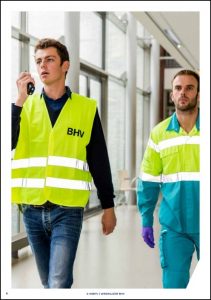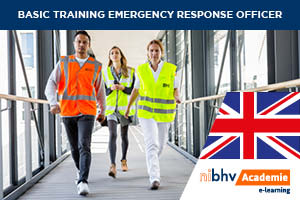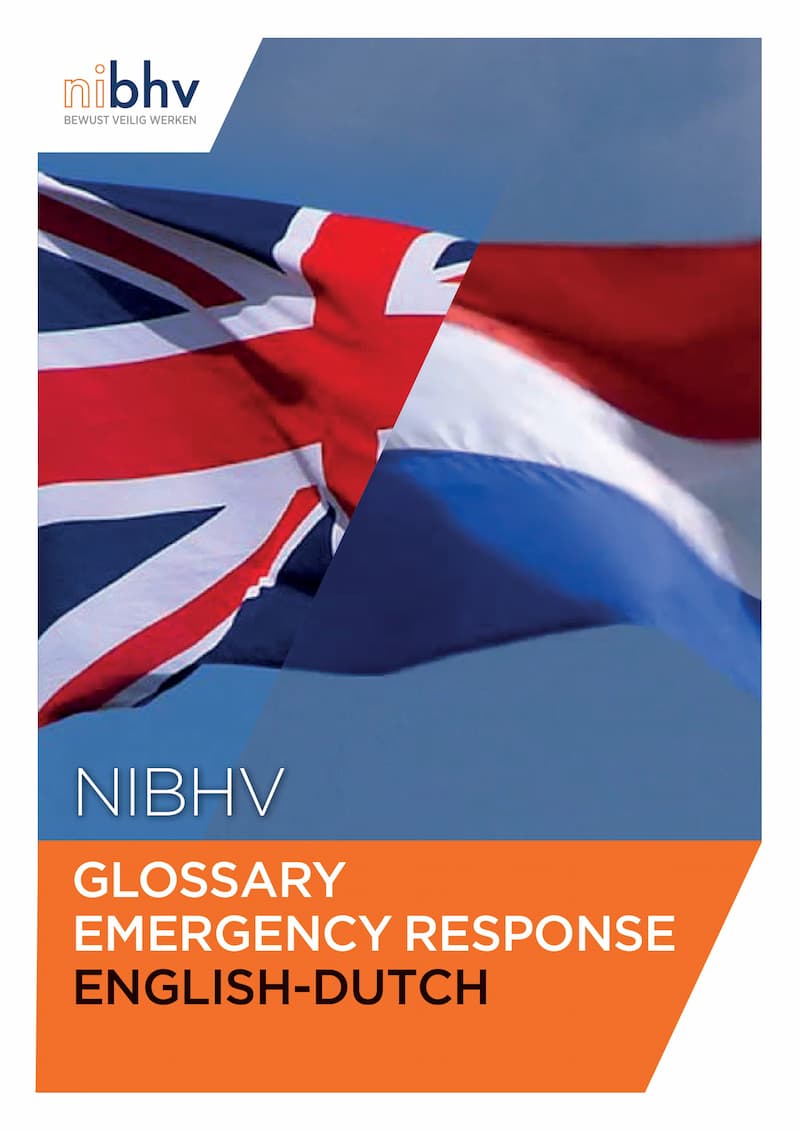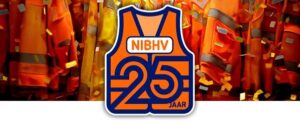Basic ER course
Emergency response officers (EROs) are regular employees. They take action when something happens on the company’s premises: fire breaks out, someone is hurt, or an evacuation is necessary. They know what to do in the event of a fire or if someone faints. In the event of an evacuation, the EROs ensure that everyone leaves the building safely.

EROs generally reach the scene of an incident before the fire brigade, ambulance or police and can make a significant difference in the early stages of an incident. EROs are trained to function as the advance guard during incidents, until the emergency services arrive. They take measures to minimize injury and damage.
The basic ER course consists of four components that can also be taken separately:
1. Firefighting
The firefighting component teaches what you need to take into account when you receive notification of a fire on your company’s premises. When are you justified in attempting to extinguish a fire? In which cases should you immediately commence evacuation? You’ll learn which fires you can extinguish, and how to do so. Naturally, the course also covers the risks of extinguishing a fire. After all, your own safety always comes first.
2. Evacuation
In the event of an evacuation, there should always be a general evacuation procedure describing what the emergency response officer needs to do in the event of an evacuation. Evacuation facilities and equipment are also covered, as well as collaboration with external emergency services.
3. Non-emergency first aid
Non-emergency first aid involves the assessment and treatment of non-life-threatening conditions such as wounds, eye injuries, bruises/bruising, sprains, fractures or burns.
4. Emergency first aid
Emergency first aid covers cardiopulmonary resuscitation using the Automated External Defibrillator (AED). This component also discusses what to do in the event of choking, shock, angina pectoris, heart attack, stroke, epilepsy, diabetes and brain damage.
If you would like to know more about the topics covered in the course, take a look at the table of contents for the basic ER course book.
Admission requirements
No prior education is required; everyone can take the basic training course.
Course duration
NIBHV recommends a total course duration of at least 16 hours. Trainers can decide for themselves how to arrange the course, for example in two whole days or four half days. The practical part of the course is an essential step in your learning process, enabling you to put all the theory you have learnt into practice. During the practical course, the ER instructor will help you learn all the skills that you will need to demonstrate that you’ve achieved the required learning objectives.
You can obtain information about dates, venues and costs from various safety trainers.
You can also opt for the online version with practical component: you then do the theory via e-learning, and attend a one-day course focused on acquiring the skills. Ask your trainer about the options.
Learning objectives and exam
The ER course finishes with an exam consisting of a multiple-choice test and a practical exam. The learning objectives listed below will be tested during the exam.
If you’d like to know more about the competencies covered in each component, please visit:
- Firefighting competencies
- Evacuation competencies
- Non-emergency first aid competencies
- Emergency first aid competencies
Firefighting competencies:
- The course participant has knowledge of:
- ER team tasks and interventions;
- ER team intervention options in the event of fire and evacuation;
- fire and methods for extinguishing a fire;
- ER team tasks in the event of a fire.
- The course participant can follow the procedure for checking and opening a door in the event of a suspected fire.
- The course participant can follow the procedure for fighting a small, starting fire involving solids.
- The course participant can follow the procedure for fighting a small, starting fire involving liquids or fat/oil.
Firefighting learning objective: the course participant can extinguish a small, starting fire using the appropriate equipment for this type of fire.
Evacuation competencies
- The course participant has knowledge of:
- ER team tasks and interventions;
- ER team intervention options in the event of fire and evacuation;
- the factors involved in an evacuation;
- the facilities and equipment in place for an evacuation;
- ER team tasks in the event of an evacuation in accordance with the general evacuation procedure.
- The course participant can follow the procedure for providing assistance in the event of an evacuation.
Evacuation learning objective: The course participant can carry out the ER team task in the event of an evacuation.
Non-emergency first aid competencies
- The courseparticipant has knowledge of:
- the alarm method and general emergency response rules;
- principles for providing first aid.
- The course participant can move a casualty using the Rautek technique.
- The course participant has knowledge of providing first aid for a non-urgent medical incident;.
- The course participant can provide first aid for:
- external wounds;
- bruises and sprains;
- fractures.
Non-emergency first aid learning objective: the course participant can provide first aid for non-urgent medical incidents
Emergency first aid competencies
- The course participant has knowledge of:
- the alarm method and general emergency response rules;
- principles for providing first aid.
- The course participant can move a casualty using the Rautek technique.
- The course participant has knowledge of providing first aid in the event of a medical emergency.
- The course participant can recognise the signs of impaired consciousness and respond appropriately.
- The course participant can open a casualty’s airway, check the breathing and recognise the signs of cardiac arrest.
- The course participant can give a casualty chest compressions and rescue breaths.
- The course participant can perform cardiopulmonary resuscitation.
- The course participant can use an Automated External Defibrillator (AED), both as an emergency response officer and as an operator.
- The course participant can turn a casualty over from their stomach onto their back.
- The course participant can place a casualty into the recovery position.
- The course participant can clear an obstruction in a casualty’s airway.
- The course participant can provide first aid for bleeding.
Emergency first aid learning objective: the course participant can provide first aid in the event of a medical emergency
Download our glossaries English – Dutch
More information about the basic ER course:
Take a look at our products in the NIBHV webshop.
You can also read more about our supplementary ERO insurance.
Sign up for the course
You can take a course with one of our certified emergency response trainers. These emergency response trainers are tested for quality. Ask your emergency response trainer whether he or she is NIBHV certified, so that you can be sure of a qualitative training.
Are you looking for a (new) emergency response trainer? Use our database:
If you’d like any further information, please contact us:




